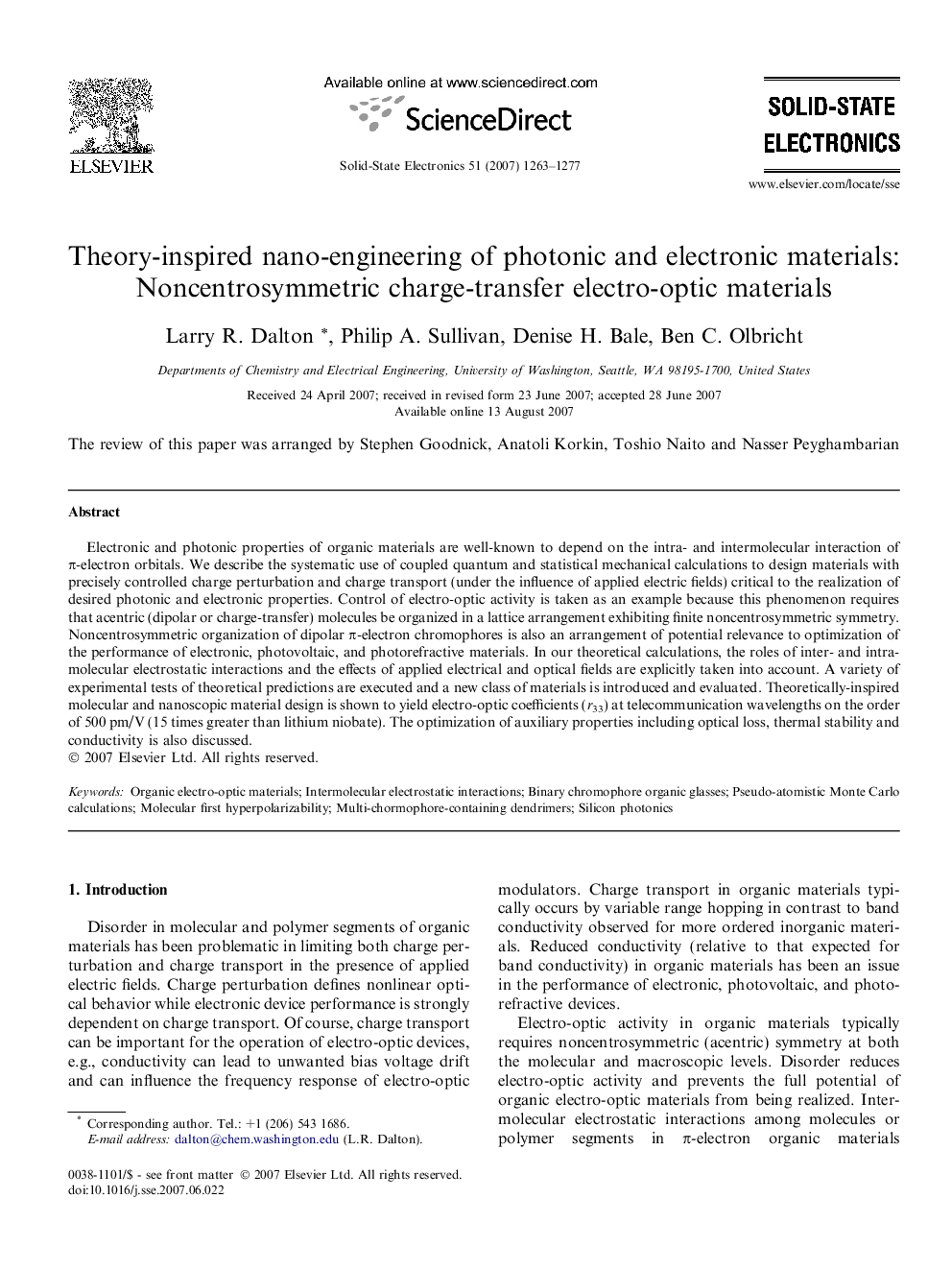| Article ID | Journal | Published Year | Pages | File Type |
|---|---|---|---|---|
| 749375 | Solid-State Electronics | 2007 | 15 Pages |
Electronic and photonic properties of organic materials are well-known to depend on the intra- and intermolecular interaction of π-electron orbitals. We describe the systematic use of coupled quantum and statistical mechanical calculations to design materials with precisely controlled charge perturbation and charge transport (under the influence of applied electric fields) critical to the realization of desired photonic and electronic properties. Control of electro-optic activity is taken as an example because this phenomenon requires that acentric (dipolar or charge-transfer) molecules be organized in a lattice arrangement exhibiting finite noncentrosymmetric symmetry. Noncentrosymmetric organization of dipolar π-electron chromophores is also an arrangement of potential relevance to optimization of the performance of electronic, photovoltaic, and photorefractive materials. In our theoretical calculations, the roles of inter- and intramolecular electrostatic interactions and the effects of applied electrical and optical fields are explicitly taken into account. A variety of experimental tests of theoretical predictions are executed and a new class of materials is introduced and evaluated. Theoretically-inspired molecular and nanoscopic material design is shown to yield electro-optic coefficients (r33) at telecommunication wavelengths on the order of 500 pm/V (15 times greater than lithium niobate). The optimization of auxiliary properties including optical loss, thermal stability and conductivity is also discussed.
